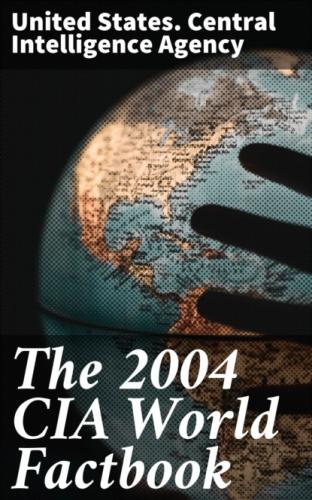Transnational Issues Albania
Disputes - international:
the Albanian Government calls for the protection of the rights of
ethnic Albanians in neighboring countries, and the peaceful
resolution of interethnic disputes; some ethnic Albanian groups in
neighboring countries advocate for a "greater Albania," but the idea
has little appeal among Albanian nationals
Illicit drugs:
increasingly active transshipment point for Southwest Asian
opiates, hashish, and cannabis transiting the Balkan route and - to
a far lesser extent - cocaine from South America destined for
Western Europe; limited opium and growing cannabis production;
ethnic Albanian narcotrafficking organizations active and expanding
in Europe; vulnerable to money laundering associated with regional
trafficking in narcotics, arms, contraband, and illegal aliens
This page was last updated on 10 February, 2005
======================================================================
@Algeria
Introduction Algeria
Background: After more than a century of rule by France, Algerians fought through much of the 1950s to achieve independence in 1962. Algeria's primary political party, the National Liberation Front (FLN), has dominated politics ever since. Many Algerians in the subsequent generation were not satisfied, however, and moved to counter the FLN's centrality in Algerian politics. The surprising first round success of the Islamic Salvation Front (FIS) in the December 1991 balloting spurred the Algerian army to intervene and postpone the second round of elections to prevent what the secular elite feared would be an extremist-led government from assuming power. The army began a crack down on the FIS that spurred FIS supporters to begin attacking government targets. The government later allowed elections featuring pro-government and moderate religious-based parties, but did not appease the activists who progressively widened their attacks. The fighting escalated into an insurgency, which saw intense fighting between 1992–1998 and which resulted in over 100,000 deaths - many attributed to indiscriminate massacres of villagers by extremists. The government gained the upper hand by the late-1990s and FIS's armed wing, the Islamic Salvation Army, disbanded in January 2000. However, small numbers of armed militants persist in confronting government forces and conducting ambushes and occasional attacks on villages. The army placed Abdelaziz BOUTEFLIKA in the presidency in 1999 in a fraudulent election but claimed neutrality in his 2004 landslide reelection victory. A number of longstanding problems continue to face BOUTEFLIKA in his second term, including the ethnic minority Berbers' ongoing autonomy campaign, large-scale unemployment, a shortage of housing, unreliable electrical and water supplies, government inefficiencies and corruption, and the continuing - although significantly degraded - activities of extremist militants. Algeria must also diversify its petroleum-based economy, which has yielded a large cash reserve but which has not been used to redress Algeria's many social and infrastructure problems. Algeria assumed a two-year seat on the UN Security Council in January 2004.
Geography Algeria
Location:
Northern Africa, bordering the Mediterranean Sea, between Morocco
and Tunisia
Geographic coordinates:
28 00 N, 3 00 E
Map references:
Africa
Area:
total: 2,381,740 sq km
water: 0 sq km
land: 2,381,740 sq km
Area - comparative:
slightly less than 3.5 times the size of Texas
Land boundaries:
total: 6,343 km
border countries: Libya 982 km, Mali 1,376 km, Mauritania 463 km,
Morocco 1,559 km, Niger 956 km, Tunisia 965 km, Western Sahara 42 km
Coastline:
998 km
Maritime claims:
territorial sea: 12 nm
exclusive fishing zone: 32–52 nm
Climate:
arid to semiarid; mild, wet winters with hot, dry summers along
coast; drier with cold winters and hot summers on high plateau;
sirocco is a hot, dust/sand-laden wind especially common in summer
Terrain:
mostly high plateau and desert; some mountains; narrow,
discontinuous coastal plain
Elevation extremes:
lowest point: Chott Melrhir −40 m
highest point: Tahat 3,003 m
Natural resources:
petroleum, natural gas, iron ore, phosphates, uranium, lead, zinc
Land use: arable land: 3.22% permanent crops: 0.25% other: 96.53% (2001)
Irrigated land:
5,600 sq km (1998 est.)
Natural hazards:
mountainous areas subject to severe earthquakes; mudslides and
floods in rainy season
Environment - current issues:
soil erosion from overgrazing and other poor farming practices;
desertification; dumping of raw sewage, petroleum refining wastes,
and other industrial effluents is leading to the pollution of rivers
and coastal waters; Mediterranean Sea, in particular, becoming
polluted from oil wastes, soil erosion, and fertilizer runoff;
inadequate supplies of potable water
Environment - international agreements:
party to: Biodiversity, Climate Change, Desertification, Endangered
Species, Environmental Modification, Hazardous Wastes, Law of the
Sea, Ozone Layer Protection, Ship Pollution, Wetlands
signed, but not ratified: none of the selected agreements
Geography - note:
second-largest country in Africa (after Sudan)
People Algeria
Population:
32,129,324 (July 2004 est.)
Age structure:
0–14 years: 29.9% (male 4,893,971; female 4,705,933)
15–64 years: 65.5% (male 10,593,840; female 10,443,300)
65 years and over: 4.6% (male 703,420; female 788,860) (2004 est.)
Median age:
total: 23.8 years
male: 23.7 years
female: 24 years (2004 est.)
Population growth rate:
1.28% (2004 est.)
Birth rate:
17.76 births/1,000 population (2004 est.)
Death rate:
4.61 deaths/1,000 population (2004 est.)
Net migration rate:
−0.39 migrant(s)/1,000 population (2004 est.)
Sex ratio:
